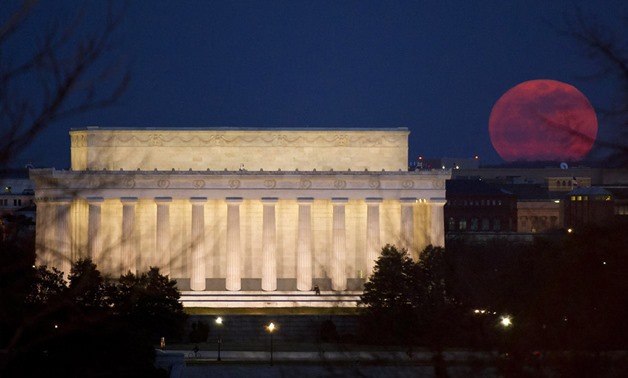
A "super moon" rises near the Lincoln Memorial on March 19, 2011, in Washington, D.C. Image Credit: NASA/Bill Ingalls
CAIRO – 31 December 2017: The first of January will witness the first 2018 Supermoon for the U.S., while Asia, Arica, and Europe and Australia skies will witness it on January 2, according to NASA.
It is considered a rare astronomical phenomenon; as January will witness two full Supermoons.
The end of January will also witness another Supermoon, which is called the “Blue Moon.”
NASA published on December 20 a full calendar for 2018 full moons and lunar eclipses. The calendar shows, the end of January will witness first 2018 total lunar eclipse.
According to Space.com, “Supermoons happen when a full moon approximately coincides with the moon's perigee, or a point in its orbit at which it is closest to Earth. This makes the moon appear up to 14 percent larger and 30 percent brighter than usual.”
According to CNN, Native American tribes named January’s full moon “Wolf Moon” due to the howls of wolves in the cold times of the year. The term “Blue Moon” is used when the same month witnesses the presence of two full moons.

Comments
Leave a Comment